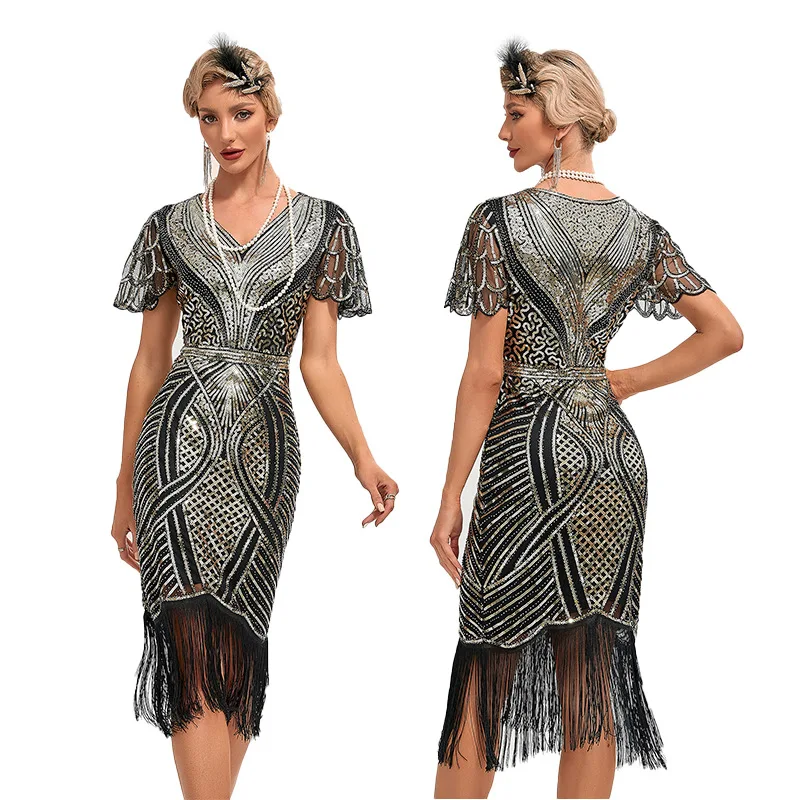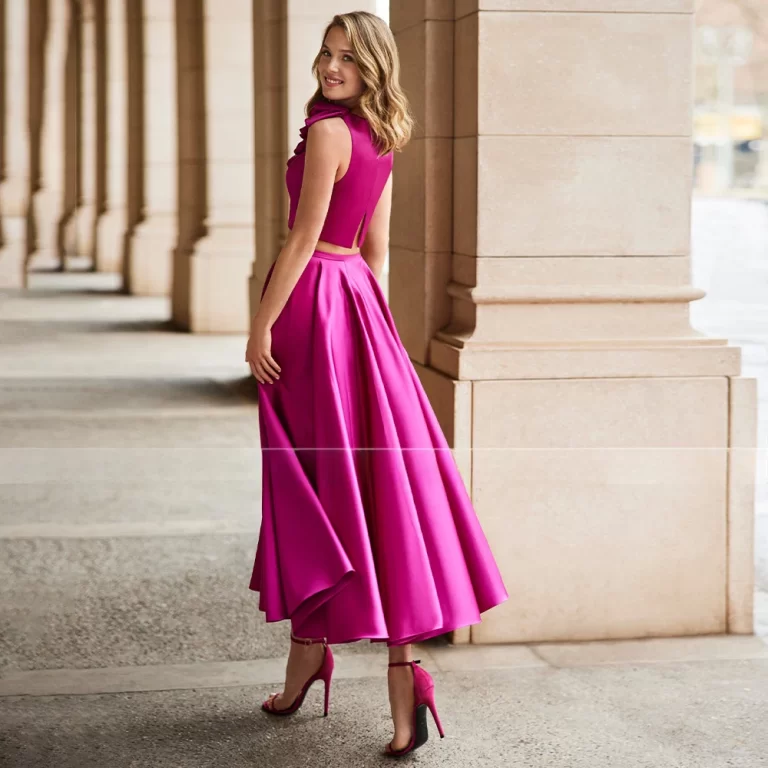Introduction
The 1920s was a decade defined by change, rebellion, and glamour. This era saw women stepping into new social roles, and their fashion reflected that shift. Cocktail and party 20s style dresses from the 1920s are iconic symbols of this time, embodying the spirit of freedom and celebration. This article explores the design elements, cultural influences, and lasting impact of 1920s cocktail and party dresses.
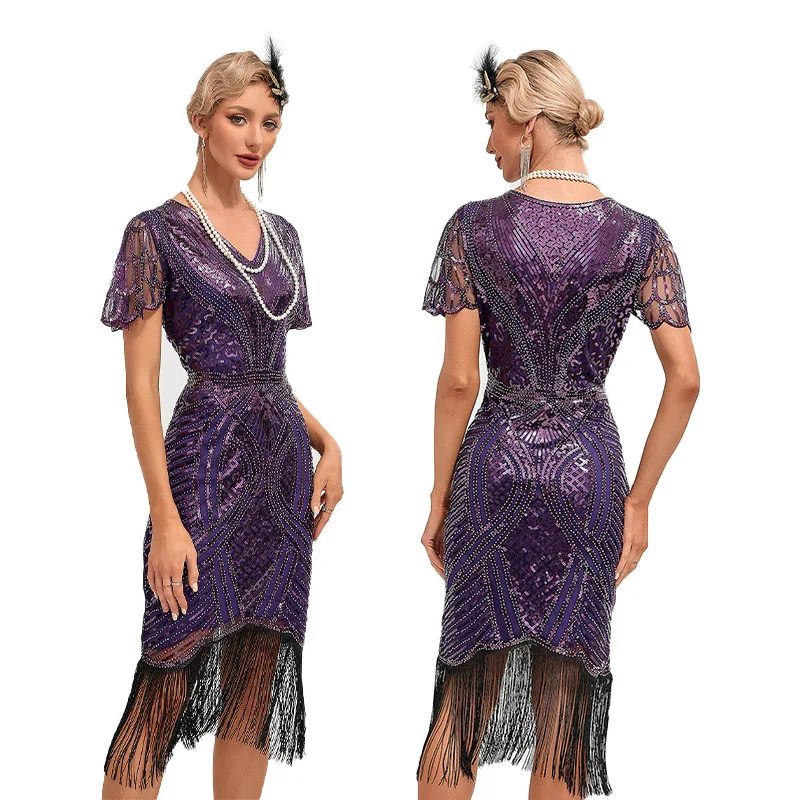
The Roaring Twenties: A Cultural Revolution
The 1920s, often called the “Roaring Twenties,” marked a significant cultural transformation. World War I had ended, and society was ready to embrace new ideas and lifestyles. Women gained the right to vote in many countries, which empowered them. They sought more independence and started to enjoy life more fully. This shift was not just political but also social and cultural.
The Rise of the Flapper
One of the most notable trends of the 1920s was the emergence of the flapper. Flappers were young women who defied traditional norms. They bobbed their hair, wore shorter dresses, and embraced a more casual lifestyle. The flapper movement was about more than fashion; it represented a new way of thinking. Women wanted to be free from the constraints of the past.
Flapper dresses were often adorned with fringe, beads, and sequins. These embellishments made the dresses eye-catching and perfect for dancing. The styles emphasized a straight silhouette, which was a departure from the hourglass figure of the previous decades. Women felt liberated in these dresses, allowing them to move freely on the dance floor. The Charleston and other popular dances of the time encouraged this new, carefree style.
Fashion Influences of the 1920s
The fashion of the 1920s was influenced by various factors, including art, music, and societal changes. The Jazz Age brought with it a love for lively music and dance, which influenced dress designs. Designers began to create garments that allowed for movement and expression. The art deco movement also played a role in fashion, inspiring geometric patterns and bold colors.
The influence of Hollywood cannot be overlooked. Film stars set trends that many women wanted to emulate. Actresses like Clara Bow and Louise Brooks popularized the flapper look. Their glamorous lifestyles and unique fashion choices captivated audiences. This fascination with celebrity culture led many women to seek similar styles, making cocktail dresses a must-have for social events.
Key Features of 1920s Cocktail and Party Dresses
The 1920s cocktail and party dresses had several distinct features. These elements made them stand out and continue to influence modern fashion today.
Silhouettes and Cuts
The silhouette of 1920s dresses was often loose and straight. This style was a stark contrast to the fitted garments of earlier decades. The drop-waist design became particularly popular. This style emphasized a lower waistline, allowing for greater movement. Women felt more comfortable and confident in these dresses.
Many dresses featured A-line shapes, which flared gently from the waist down. This design made them flattering for various body types. The straight lines of the dresses were perfect for dancing and socializing. Additionally, dresses often fell to the knee or just below, allowing women to show off their legs and footwear.
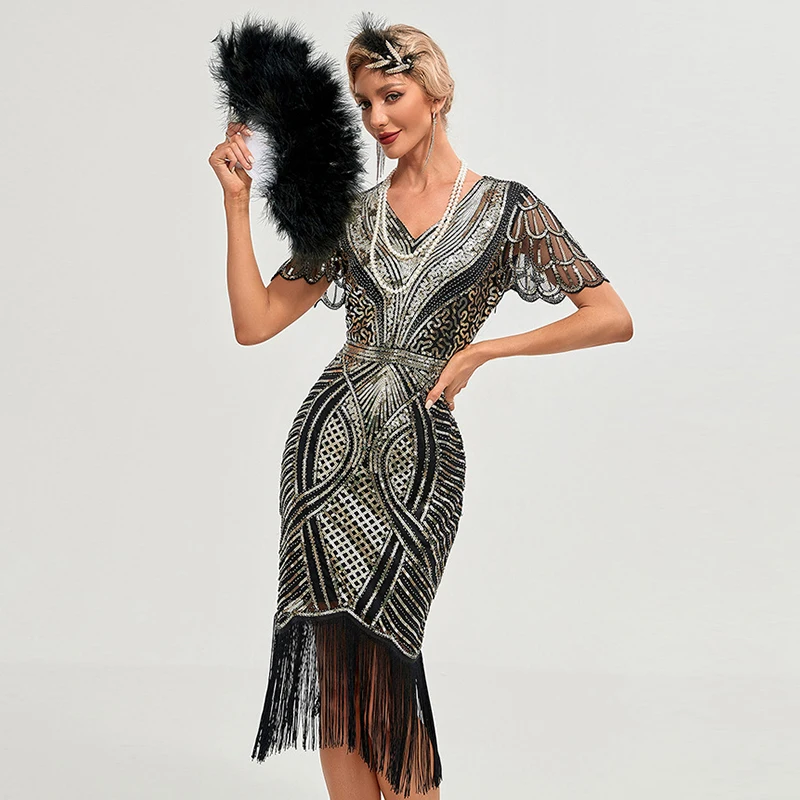
Fabrics and Embellishments
The choice of fabrics and embellishments also set 1920s cocktail dresses apart. Designers often used luxurious materials such as silk, satin, and chiffon. These fabrics draped beautifully and added an air of sophistication. The shimmering effect of these materials caught the light, making the wearer feel glamorous.
Embellishments played a crucial role in the design of these dresses. Beads, sequins, and fringe were commonly used to create eye-catching details. These elements added movement and excitement to the garments. When women danced, the dresses sparkled and flowed, creating a visually stunning effect. The more elaborate the embellishments, the more attention the dress received.
Colors and Patterns
The color palette of the 1920s was diverse and vibrant. Bold colors like red, green, and blue were popular, alongside classic black and white. Patterns, too, were prevalent. Geometric shapes and art deco designs found their way into many dresses. These patterns added a modern touch to the overall look.
The use of contrasting colors was another trend. For example, a black dress might feature gold or silver embellishments. This contrast enhanced the dress’s visual appeal and made it stand out at parties and events. Women wanted to make a statement, and the right dress helped them achieve that.
The Social Scene of the 1920s: Events and Occasions
The 1920s was a time of celebration and socializing. Cocktail parties, dances, and social gatherings became commonplace. Women needed stylish dresses for these occasions. The demand for fashionable attire influenced designers to create stunning cocktail dresses that embodied the spirit of the times.
Cocktail Parties: A New Social Norm
Cocktail parties emerged as a popular social event during the 1920s. These gatherings provided an opportunity for friends and acquaintances to mingle in a relaxed atmosphere. Women sought elegant yet comfortable dresses for these occasions. The cocktail dress became the perfect solution.
At cocktail parties, women showcased their style and sophistication. They often accessorized with long pearls, cloche hats, and gloves. The goal was to create an ensemble that captured the essence of the 1920s. The lively atmosphere of these events encouraged women to express their personalities through fashion.
Dance Halls and Social Events
Dance halls flourished during the 1920s, and social dancing became a popular pastime. Women wore their finest cocktail dresses to these venues, ready to show off their moves. The Charleston and other energetic dances required dresses that allowed for movement. Designers focused on creating garments that looked beautiful while being functional.
The excitement of dance events fueled the popularity of Cocktail and party 20s style dresses. Women wanted to feel confident and stylish while dancing the night away. This desire for fashionable yet practical attire led to innovative designs that catered to the demands of the social scene.
Formal Events and Glamorous Gatherings
In addition to cocktail parties and dance halls, formal events were prevalent during the 1920s. Women attended galas, charity events, and other high-society gatherings. These occasions called for more sophisticated cocktail dresses. Designers created exquisite gowns that showcased intricate detailing and luxurious fabrics.
At formal events, women aimed to make a lasting impression. Dresses featured elegant embellishments, such as lace and embroidery. The goal was to embody glamour and sophistication. Women often paired their dresses with statement jewelry and stylish accessories to enhance their overall look.
The Influence of Iconic Designers
The 1920s witnessed the rise of several iconic fashion designers who shaped the cocktail dress landscape. These designers introduced innovative styles and techniques that left a lasting impact on the industry.
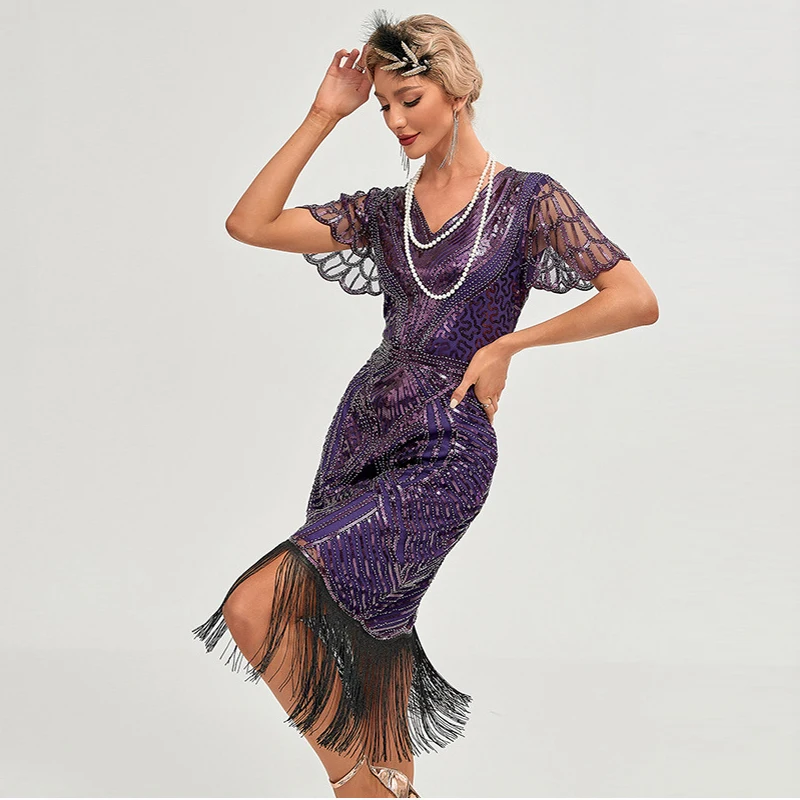
Coco Chanel: A Fashion Pioneer
Coco Chanel was one of the most influential designers of the 1920s. She revolutionized women’s fashion with her simple yet elegant designs. Chanel introduced the concept of the “little black dress,” which became a timeless classic. Her designs emphasized comfort and functionality, allowing women to move freely.
Chanel’s use of jersey fabric was groundbreaking. It allowed for fluidity and ease of wear, contrasting sharply with the more structured garments of the past. Her influence extended beyond clothing; Chanel’s approach to style and personal branding changed the fashion industry. She encouraged women to embrace their individuality and express themselves through fashion.
Paul Poiret: The Master of Elegance
Paul Poiret was another prominent designer of the 1920s. He was known for his bold and innovative designs. Poiret rejected the corseted silhouette of the past and embraced a more liberated style. His designs often featured flowing lines and vibrant colors.
Poiret was also a master of draping. He created dresses that highlighted the natural shape of the body. His work emphasized comfort without sacrificing elegance. Poiret’s designs were a reflection of the changing attitudes of the time, and he played a significant role in shaping the future of women’s fashion.
Other Influential Designers
While Chanel and Poiret were key figures, many other designers contributed to the cocktail dress revolution. Designers like Jean Patou and Madeleine Vionnet also made their mark during this era. Patou’s designs often featured playful patterns and vibrant colors, appealing to the youthful spirit of the time. Vionnet, known for her innovative draping techniques, created Cocktail and party 20s style dresses that celebrated the female form.
These designers collectively transformed the fashion landscape of the 1920s. They pushed boundaries, embraced new materials, and introduced fresh concepts. Their influence can still be seen in modern cocktail dresses, proving that the legacy of the 1920s lives on.
The Enduring Legacy of 1920s Cocktail Dresses
The cocktail and party dresses of the 1920s continue to inspire fashion today. Their timeless elegance and unique designs make them relevant in modern fashion.
Revival of Vintage Fashion
In recent years, there has been a resurgence of interest in vintage fashion. Designers and fashion houses have drawn inspiration from the 1920s, creating modern interpretations of classic styles. The popularity of retro-themed events and parties has further fueled this trend.
Women are now seeking 1920s-inspired cocktail dresses for special occasions. Vintage shops and online retailers offer a wide range of options, allowing women to embrace this iconic style. The nostalgia associated with the 1920s adds to the appeal, as people yearn for a simpler, more glamorous time.
Modern Interpretations of the 1920s Style
Contemporary designers have also incorporated elements of 1920s fashion into their collections. Cocktail and party 20s style dresses often feature similar silhouettes, fabrics, and embellishments. Designers play with the aesthetics of the past while adding their unique twists.
